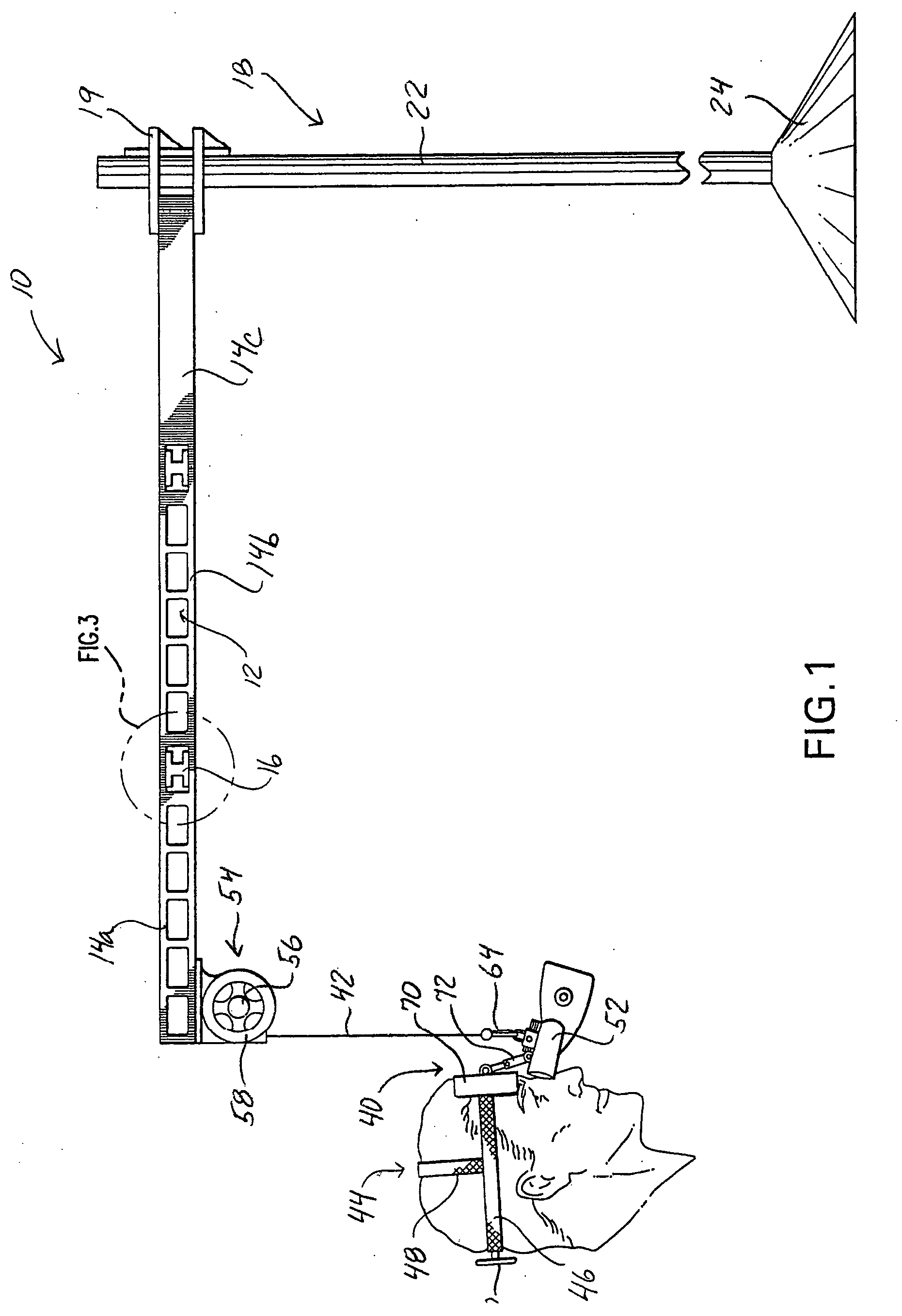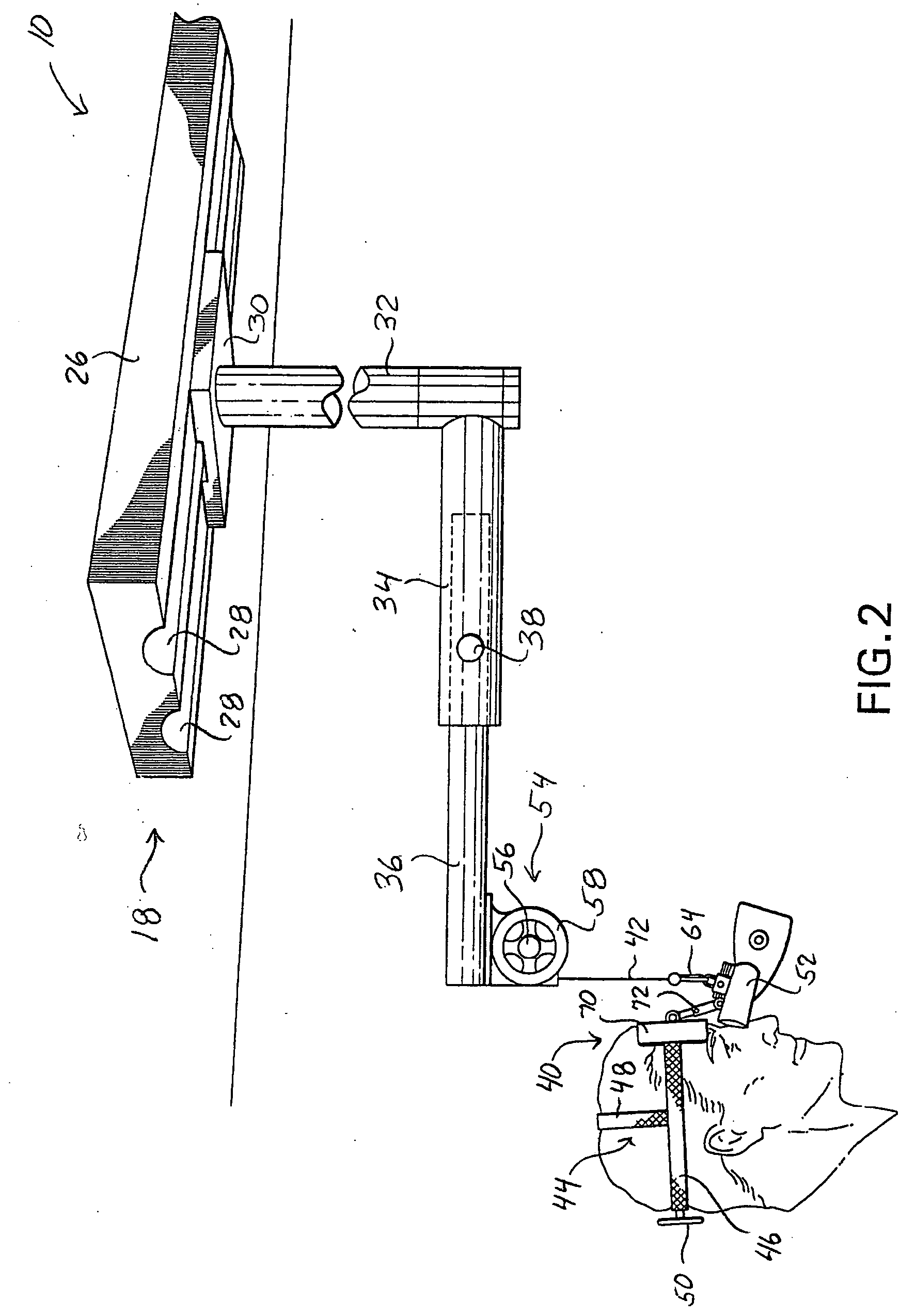Surgical microscope support system
a support system and microscope technology, applied in the field of binocular microscope systems, can solve the problems of limited magnification factor of the device, inadequate loupe for a wide range of procedures, and essentially the entire weight of the system being carried by the operator's head
- Summary
- Abstract
- Description
- Claims
- Application Information
AI Technical Summary
Benefits of technology
Problems solved by technology
Method used
Image
Examples
Embodiment Construction
[0030] Reference will now be made in detail to one or more embodiments of the invention, examples of which are graphically illustrated in the drawings. The embodiments are provided by way of explanation of the invention, and not meant as a limitation of the invention. For example, features illustrated or described as part of one embodiment may be utilized with another embodiment to yield still a further embodiment. It is intended that the present invention include these and other modifications and variations.
[0031] Various embodiments of a microscope system 10 according to the invention are illustrated in the figures. In the embodiment of FIG. 1, the microscope system 10 includes an adjustable arm 12 attached to a support mount 18. The mount 18 may take on various configurations. In the illustrated embodiment, mount 18 includes a vertically extending support pole 22 attached to a base unit 24. The base unit 24 may be stationary, wheeled, etc. Additionally, the support pole 22 may b...
PUM
 Login to View More
Login to View More Abstract
Description
Claims
Application Information
 Login to View More
Login to View More - R&D
- Intellectual Property
- Life Sciences
- Materials
- Tech Scout
- Unparalleled Data Quality
- Higher Quality Content
- 60% Fewer Hallucinations
Browse by: Latest US Patents, China's latest patents, Technical Efficacy Thesaurus, Application Domain, Technology Topic, Popular Technical Reports.
© 2025 PatSnap. All rights reserved.Legal|Privacy policy|Modern Slavery Act Transparency Statement|Sitemap|About US| Contact US: help@patsnap.com



